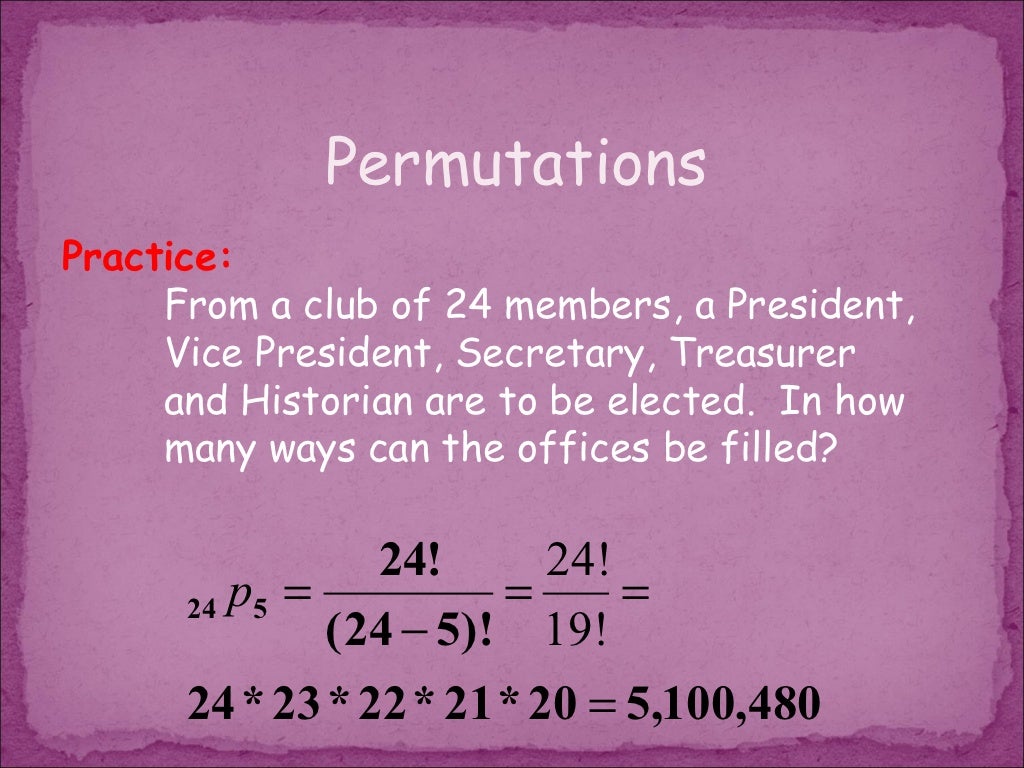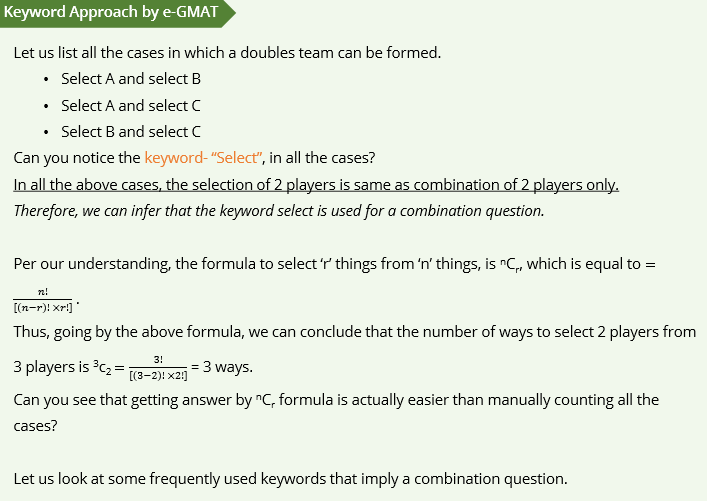

I guess permutation is a special case of the principle of multiplication. 3.What is the difference between principle of multiplication and permutation. Combinations are used for things of similar kind. Permutations are used for things of different kind. Combinations are used to find the number of possible groups which can be formed. We hope the examples shared in this write-up have enlightened you on how we practice our knowledge of permutation and combination to make our lives easier. 6.Combinations refer to the possible selections of a collection of objects. Permutations are used when order/sequence of arrangement is needed. Real-life examples clarify our doubts and show how we use our learnings in daily life. Combinations are used when only the number of possible groups are to be found, and the order. After that color third face, and then w.r.t this face other face can be. Permutations are used when order/sequence of arrangement is needed. And that’s simply because we learned them in school. Let's put any color on a face of cube, now opposite face has 5 choices to get paint. We just fail to appreciate why we’re able to do it. We use our knowledge in so many ways regularly.

When learning topics like permutation and combination, students often think they will never use them later in life. The combination of dishes we select gives us a great dining experience. Keep in mind, combination-based questions will indicate that you need to form groups or sets, whereas permutation questions will hint towards finding an order. Our sequence of selection does not alter the taste of the food.

Combination is defined and given by the following function. we might ask how many ways we can select 2 letters from that set. For example, suppose we have a set of three letters: A, B, and C. While doing so, we pick items from the menu in random order and place our order. A combination is a selection of all or part of a set of objects, without regard to the order in which objects are selected. So, what do we do? We select the best possible combination of foods to satiate our taste buds. There’s so much deliciousness on the menu which leaves us confused.

Ordering food at a restaurant is never easy. So the only difference between the two formulas is that nCr has an additional r in the denominator (that is the number of ways in which you can arrange r. Thinking along these lines has helped me reduce confusion in many PnC problems. So, keep reading! Real-life examples of permutations 1. Permutation can be thought of number of ways to order 'something', while Combination is the number of ways of selecting 'something'. We have jotted down some interesting examples in this write-up to help you understand how these math concepts find their way into the real world. On the contrary, combination involves arranging or selecting objects/ data from a large set, and the arrangement or order of selection does not matter. An important point to remember here is that the order of arrangement of objects/ data matters in permutation. Permutation involves arranging a set of objects or data in sequential order and determining the number of ways it can be arranged. A team of 8 basketball players needs to choose a captain and co-captain. But what exactly are they? While both terms are used together, they are not the same. Permutations vs Combinations Name Date Period State if each scenario involves a permutation or a combination. There are several real-life situations where we use the knowledge we have learned in school about permutation and combination. In this article we will study the concept of Permutation and Combination and their formulas, using these to solve many sample problems as well.Permutation is. " if we have (a) ways of doing something and (b) ways of doing another thing and we can not do both at the same time, then there are a + b ways to choose one of the actions.Would you believe it if we said that while playing the piano or making a cup of coffee, you’re unknowingly applying mathematical concepts of permutation and combination? Most definitely not. So, there are three and that's what you get if you use the formula for combinations. Outcomes with two heads are HHT, HTH and THH. However, I'm confused about their application to coin tossing. Sorry This is not a complete answer but i hope it can help you. 9 I understand the formulae for combinations and permutations and that for the binomial distribution.


 0 kommentar(er)
0 kommentar(er)
